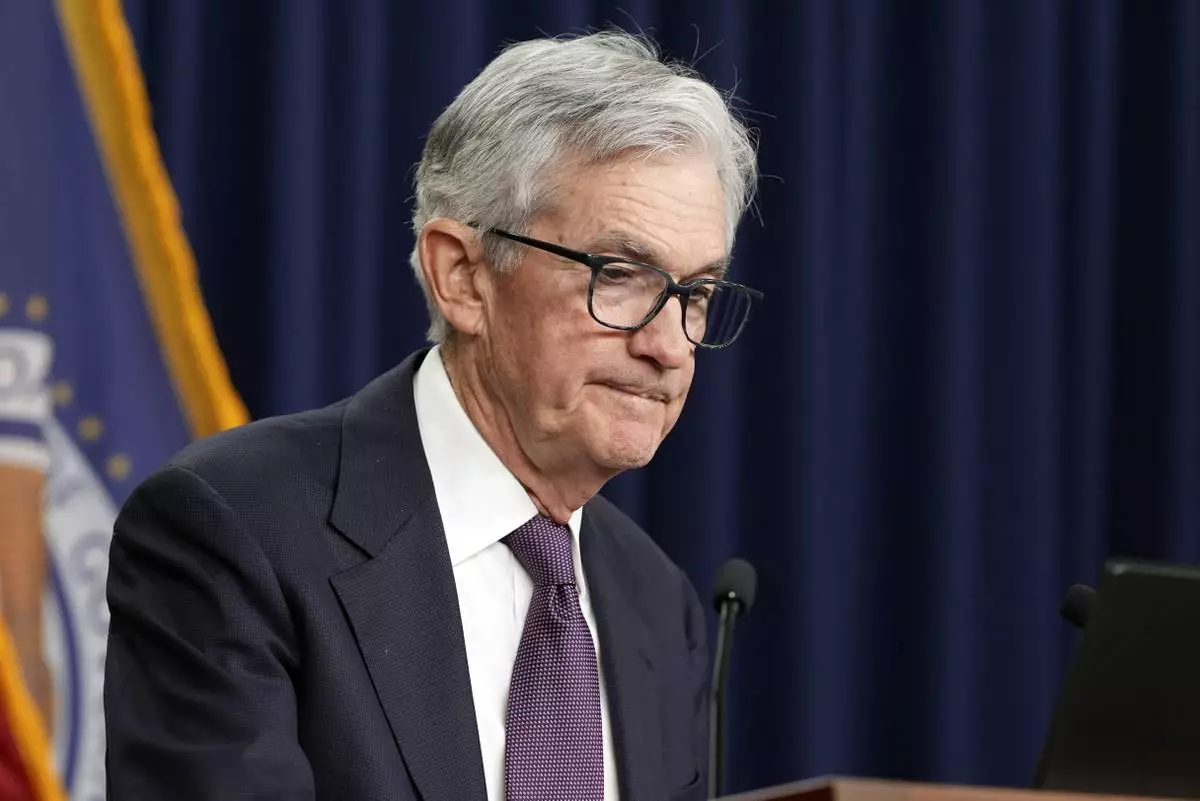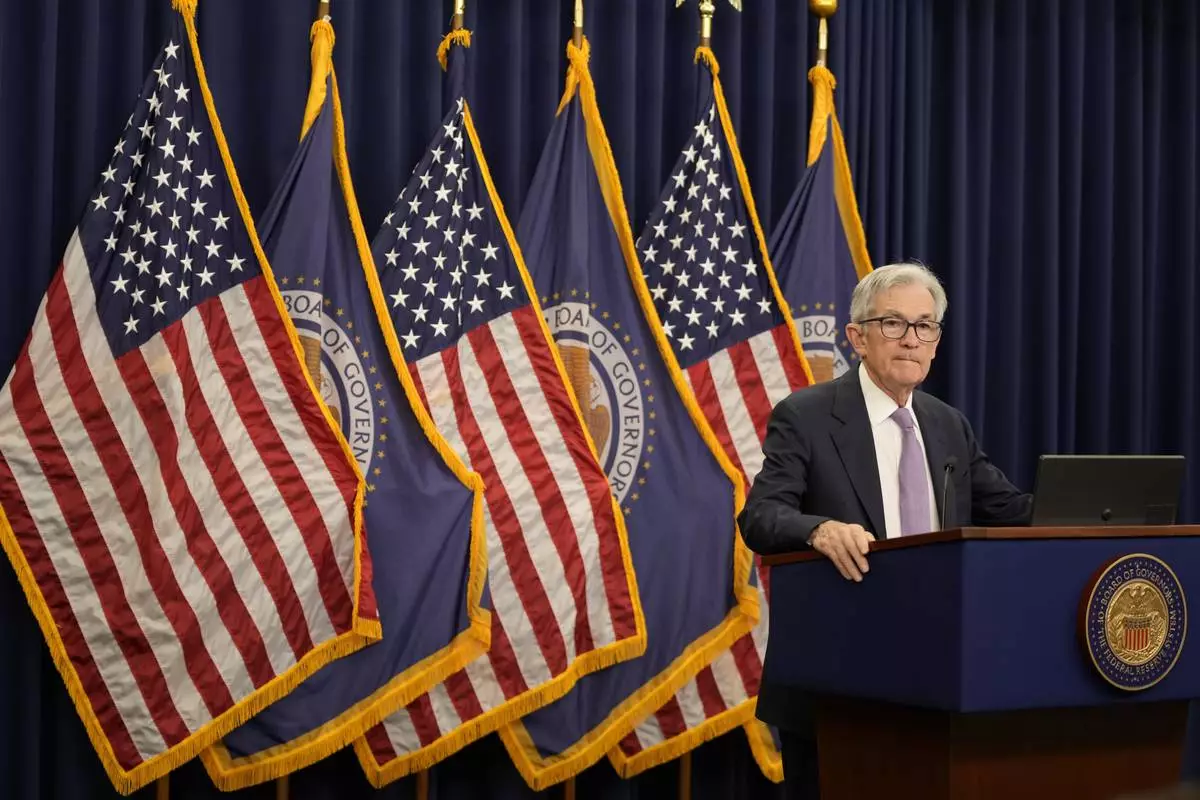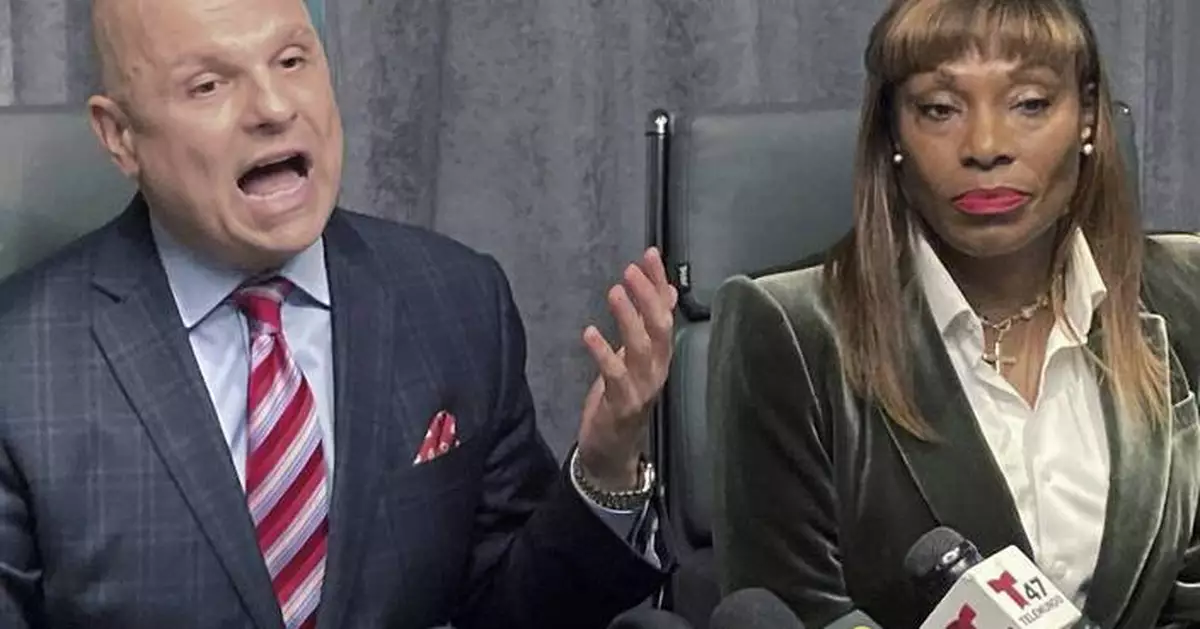NEW YORK (AP) — A former top aide to New York City Mayor Eric Adams is expected in court Thursday to face corruption charges in the latest blow to an administration beset by searches, resignations and the mayor's own indictment.
Ingrid Lewis-Martin, who resigned Sunday as Adams' chief adviser and one of the most powerful officials in City Hall, is expected to be arraigned Thursday afternoon in state court in Manhattan, two people familiar with the matter told The Associated Press.
The people were not authorized to publicly discuss details of the case and spoke to the AP on the condition of anonymity. The specific charges against Lewis-Martin were not publicly announced and remain unclear.
Manhattan District Attorney Alvin Bragg and the commissioner of the city's watchdog Department of Investigation, Jocelyn Strauber, have scheduled a news conference for Thursday afternoon. The topic was not announced.
Bragg and Strauber’s offices have been investigating Lewis-Martin. A phone message seeking comment was left with a spokesperson for the district attorney’s office. The Department of Investigation declined comment.
Lewis-Martin's attorney, Arthur Aidala, told reporters this week that she was expected to face criminal charges related to alleged improper gifts.
Lewis-Martin said Monday that she was being “falsely accused” and that she had “not made any arrangements in advance to take any gifts or money, or to have any gifts or money given to a family member or friend in order for me to do my job.”
The charges against Lewis-Martin come as the Adams administration has been roiled by criminal investigations.
Adams, a Democrat, has himself been charged with conspiracy, wire fraud and bribery charges in an unrelated federal case scheduled for trial next April. He has pleaded not guilty.
Lewis-Martin, 63, has been one of the mayor's closest confidants throughout his political career, serving in senior roles under Adams as he ascended the ranks of government in New York over the past nearly two decades. Her most recent post as Adams' chief adviser made her one of the top officials at City Hall.
She has been a target of investigators since at least September, when federal and Manhattan prosecutors met her at an airport in New York as she was getting off a flight from Japan. At the time, federal prosecutors served her with a subpoena while Manhattan prosecutors took her phones and searched her home.
Hours after that search, Lewis-Martin appeared on a radio show hosted by Aidala to discuss the investigation, telling her attorney, “I do believe that in the end that the New York City public will see that we have not done anything illegal to the magnitude or scale that requires the federal government and the DA’s office to investigate us.”
Aidala told reporters on Monday that he believed prosecutors in Manhattan were charging Lewis-Martin to get her to cooperate against Adams. In an unrelated news conference that day, Adams described Lewis-Martin as a “longtime friend and sister.”
Adams was charged in September with accepting luxury travel perks and illegal campaign contributions from a Turkish official and other foreign nationals looking to buy his influence.
The investigation into Adams became public late last year after federal agents searched the home of his top fundraiser, Brianna Suggs. Lewis-Martin has referred to Suggs as her goddaughter.
Since then, the Adams administration has been enveloped by a series of searches and seizures from investigators, leading to the resignations of top officials, including his police commissioner, schools chancellor, multiple deputy mayors and his director of Asian affairs.

FILE — Ingrid Lewis-Martin, chief advisor to New York Mayor Eric Adams, speaks during a press conference at City Hall in New York, Tuesday, Dec. 12, 2023. (AP Photo/Peter K. Afriyie, File)

FILE — New York Mayor Eric Adams, and chief advisor to the mayor Ingrid Lewis-Martin, attend a press conference at City Hall, in New York, Tuesday, Dec. 12, 2023. (AP Photo/Peter K. Afriyie, File)

Ingrid Lewis-Martin, who abruptly resigned Sunday as New York Mayor Eric Adams' chief adviser, and her attorney Arthur Aidala, spoke during a news conference, in New York, Monday, Dec. 16, 2024. (AP Photo/Jake Offenhartz)
WASHINGTON (AP) — The Federal Reserve cut its key interest rate Wednesday by a quarter-point — its third cut this year — but also signaled that it expects to reduce rates more slowly next year than it previously envisioned, mostly because of still-elevated inflation.
The Fed’s 19 policymakers projected that they will cut their benchmark rate by a quarter-point just twice in 2025, down from their estimate in September of four rate cuts. Their new projections suggest that consumers may not enjoy much lower rates next year for mortgages, auto loans, credit cards and other forms of borrowing.
The central bank's expectation of just two rate cuts in 2025 rattled Wall Street, sending stock prices plummeting in the worst day for the market in four months. The Dow Jones Industrial Average closed down more than 1,100 points, roughly 2.5%. The Nasdaq composite was hit worse: It sank about 3.5% Wednesday. Higher interest rates can slow business expansion.
Speaking at a news conference, Chair Jerome Powell underscored that policymakers are slowing their rate reductions as their benchmark rate nears a level that policymakers refer to as “neutral” — the level that is thought to neither spur nor hinder the economy.
Wednesday's projections suggest that the policymakers think they may be close to that level. Their benchmark rate stands at 4.3% after the latest rate cut, which followed a steep half-point reduction in September and a quarter-point cut last month.
“I think that a slower pace of (rate) cuts really reflects both the higher inflation readings we’ve had this year and the expectations that inflation will be higher" in 2025, Powell said. "We’re closer to the neutral rate, which is another reason to be cautious about further moves.”
Blerina Uruci, chief economist at T. Rowe Price, said the tone of Powell's news conference was surprisingly “hawkish,” meaning that it seemed to favor maintaining relatively high rates.
Uruci noted that Powell said the Fed's decision Wednesday to reduce its benchmark rate by a quarter-point was a “closer call,” indicating that there was opposition to the move. Indeed, four officials supported keeping rates unchanged Wednesday, according to the projections. Not all 19 policymakers have a vote at each meeting. One — Beth Hammack, head of the Federal Reserve Bank of Cleveland — voted against the rate cut because she favored keeping rates unchanged.
“The committee might be quite divided at this point," Uruci said. "And we have a growing hawkish contingent.”
At his news conference, Powell acknowledged that at least some Fed officials have begun to assess the potential effects of President-elect Donald Trump's policies on the economy and inflation. The Fed chair noted that some policymakers think that since the election, the future path of inflation has become harder to gauge. Trump's threats to impose tariffs on all imports and to engage in mass deportations of migrants could worsen inflation next year.
“It’s kind of common-sense thinking that when the path is uncertain, you go a little bit slower,” Powell said. “It’s not unlike driving on a foggy night or walking into a dark room with furniture. Just slow down.”
This year’s Fed rate reductions have marked a reversal after more than two years of high rates, which largely helped tame inflation but also made borrowing painfully expensive for American consumers.
But now, the Fed is facing a variety of challenges as it seeks to complete a “soft landing” for the economy, whereby high rates manage to curb inflation without causing a recession. Chief among them is that inflation remains sticky: According to the Fed’s preferred gauge, annual “core” inflation, which excludes the most volatile categories, was 2.8% in October. That is still persistently above the central bank’s 2% target.
At the same time, the economy is growing briskly, which suggests that higher rates haven’t much restrained the economy. As a result, some economists — and some Fed officials — have argued that borrowing rates shouldn’t be lowered much more for fear of overheating the economy and re-igniting inflation.
On the other hand, the pace of hiring has cooled significantly since 2024 began, a potential worry because one of the Fed’s mandates is to achieve maximum employment.
“We don’t think we need further cooling in the labor market to get inflation below 2%,” Powell said at his news conference.
The unemployment rate, while still low at 4.2%, has risen nearly a full percentage point in the past two years. Concern over rising unemployment contributed to the Fed’s decision in September to cut its key rate by a larger-than-usual half point.
Asked why the central bank envisions any rate cuts in 2025 given still-elevated inflation, Powell noted that the Fed's latest projections “have core inflation coming down to 2.5% next year."
“That would be significant progress,” he said. “We’d be seeing meaningful progress to get inflation down to that level.”
The Fed chair added: “We and most other forecasters still feel that we are on track to get down to 2%. It might take a year or two from here.”
Trump has proposed a range of tax cuts — on Social Security benefits, tipped income and overtime income — as well as a scaling-back of regulations. Collectively, these moves could stimulate growth. At the same time, Trump has threatened to impose a variety of tariffs and to seek mass deportations of migrants, which could accelerate inflation.
Powell acknowledged that Fed officials are seeking "to understand ways tariffs can affect inflation and the economy and how to think about that.”
The Fed's uncertainty about the economy's future path was underscored by the quarterly economic projections the Fed issued Wednesday. The policymakers now expect overall inflation, as measured by their preferred gauge, to rise slightly from 2.3% now to 2.5% by the end of 2025. That is far below its peak of 7.2% in June 2022.
Even so, the prospect of slightly higher inflation makes it harder for the Fed to reduce borrowing costs because high interest rates are its principal weapon against inflation.
“From here, it’s a new phase," Powell said, "and we’re going to be cautious about new cuts.”
AP Business Writer Alex Veiga contributed to this report from Los Angeles.

Federal Reserve Board Chairman Jerome Powell speaks during a news conference at the Federal Reserve, Wednesday, Dec. 18, 2024, in Washington. (AP Photo/Jacquelyn Martin)

Federal Reserve Board Chairman Jerome Powell speaks during a news conference at the Federal Reserve, Wednesday, Dec. 18, 2024, in Washington. (AP Photo/Jacquelyn Martin)

Federal Reserve Board Chairman Jerome Powell speaks during a news conference at the Federal Reserve, Wednesday, Dec. 18, 2024, in Washington. (AP Photo/Jacquelyn Martin)

Federal Reserve Board Chairman Jerome Powell arrives for a news conference at the Federal Reserve, Wednesday, Dec. 18, 2024, in Washington. (AP Photo/Jacquelyn Martin)

Federal Reserve Board Chairman Jerome Powell speaks during a news conference at the Federal Reserve, Wednesday, Dec. 18, 2024, in Washington. (AP Photo/Jacquelyn Martin)

Federal Reserve Board Chairman Jerome Powell speaks during a news conference at the Federal Reserve, Wednesday, Dec. 18, 2024, in Washington. (AP Photo/Jacquelyn Martin)

FILE - Comments by Federal Reserve Chair Jerome Powell appear on a bank of screens on the floor of the New York Stock Exchange, Nov. 7, 2024, in New York. (AP Photo/Richard Drew, File)

File - Federal Reserve Board Chairman Jerome Powell speaks during a news conference at the Federal Reserve in Washington, Nov. 7, 2024. (AP Photo/Mark Schiefelbein, File)




















